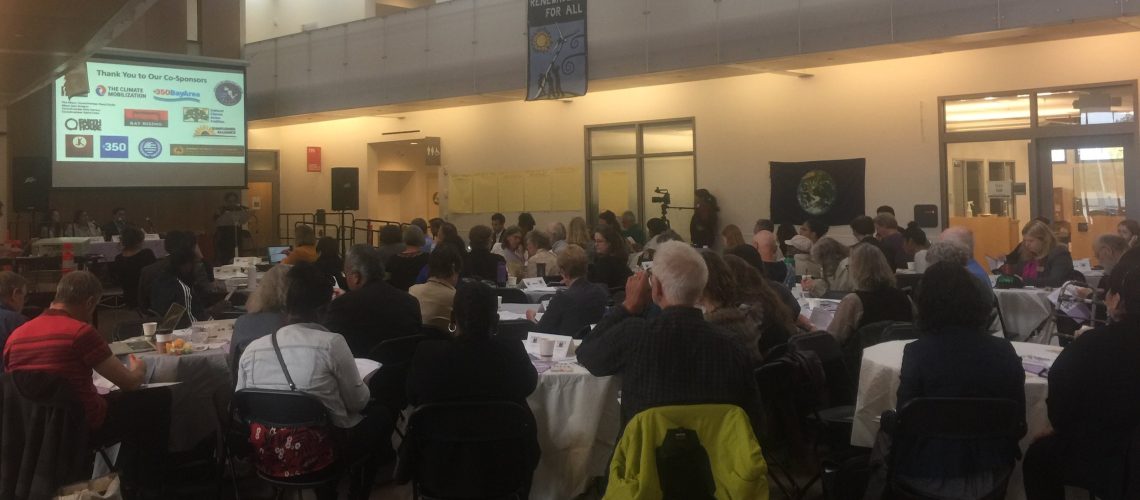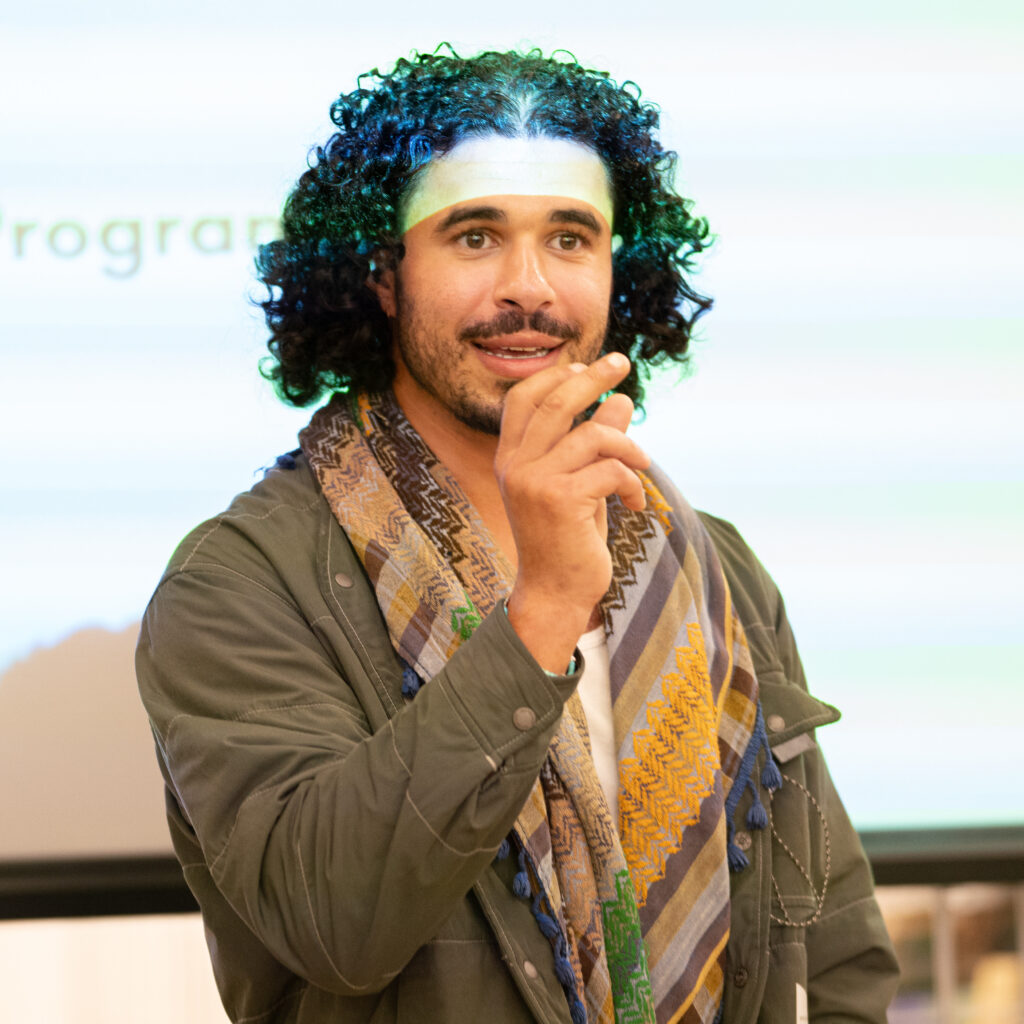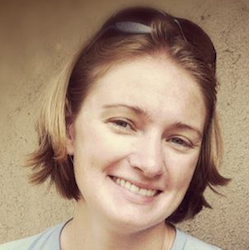By Isaac Silk
In the hazy morning hours of August 24, 2018, mayors, city council members, volunteers, sustainability directors, and activists filed in to the Ed Roberts Campus in Berkeley, California. Named for the disability rights activist who played an integral role in spreading the independent living movement across the globe, the site was an appropriate setting for a town hall meeting that aimed to jumpstart a revolution.
Stakeholders from around the nine county Bay Area gathered at the invitation of the city of Berkeley, which months before had declared a climate emergency, taking radical responsibility for solving the global climate emergency. By unanimously passing Vice-Mayor Cheryl Davila’s resolution, the city council had called for a just mobilization to end greenhouse gas emissions and begin drawing them down as quickly as possible — a goal that would require a coordinated regional effort. The town hall was billed as a first step toward a Bay Area Climate Emergency Mobilization and Just Transition Effort. To put it plainly, this is not your average local climate action planning process!
From the outset, there was a clear sense of urgency based in science and the need for justice. Vice Mayor Cheryl Davila welcomed the crowd and framed the event: “The 2050 timeline has been rendered irrelevant and we’ll need everyone on board to give humanity a fighting chance.” She noted, “Our vision and mission is to lead the region in a mobilization effort unlike anything we’ve seen since WWII right in our own backyard.” Corrina Gould, representing the Confederated Villages of Lisjan/Ohlone, kicked off the event with a blessing, welcoming the guests to her ancestors’ homeland and centering the history and environmental knowledge of indigenous people to the efforts that would be discussed.
The first panel was tasked with exploring the intersection of the climate emergency and justice. Dr. Patrick Brown of Stanford University made it clear that the decisions of those that are alive today would be those that decide the fate of the next 150 generations of humans. Crystal Chissell of Project Drawdown argued that many of the strategies that will end the era of fossil fuels and begin removing greenhouse gases from the atmosphere already exist; they just need to be implemented.
Michelle Mascarenhas-Swan of Movement Generation made an impassioned case against the extractive economy, making it clear that any transition without justice was doomed from the start. Andres Soto of Communities for a Better Environment described the horror of living in close proximity to the Chevron oil refineries and the intense dedication it takes to fight for the basic rights of at-risk communities.
Then came the city officials. Representatives from Oakland, Richmond, Marin County, San Francisco, Palo Alto, Santa Rosa, and beyond spoke of strategies that their municipalities were implementing to end the climate emergency. There was discussion of public banking and innovative financing mechanisms, transportation infrastructure development, land use reforms, and more.
A sense of excitement from the panelists and the audience was palpable and growing. The need for more coordination and resource sharing was clear.
Dr. Paloma Pavel, president of the Earth House Center, presented on the interrelation of race, poverty, and the environment. Taking a Big History view of humanity in which we are seen as the Universe evolved to explore and study itself, she urged, “we’re 13.6 billion years old, let’s start acting like it.” Councilmember Paul Koretz gave an update on the progress of climate mobilization efforts in Los Angeles. He noted that “there’s one silver bullet that can take on all the crises [that governments face] . . . a worldwide emergency mobilization started at the local level and with the lens of climate justice.”
Elected officials were invited to sign an open letter to Governor Jerry Brown and other public officials calling for them to “take decisive action at GCAS [the Global Climate Action Summit] by committing to declare a climate emergency… and by committing to immediately initiate a rapid just climate mobilization.” [And since the town hall, at least 25 elected officials have signed this open letter!]
In California, the evidence that we are in a climate emergency has become impossible to ignore. Each year fires spread further and faster; the water crisis in the Central Valley threatens global food security; sea level rise, dust bowl conditions, resource extraction, and the housing crises are a constant and growing danger to frontline communities.
Everyone in the room was well aware of how great an effort it takes to achieve even small victories in this fight for a safe climate. Each of us had at times felt hindered by this sense of powerlessness. We had all grappled with our own limitations: the borders of our jurisdictions, the availability of resources, the particularity of our institutional purpose, and most profoundly the perception of our own personal smallness. The towering figure of climate change — this omnipresent existential threat to life as we know it — seems to throw a shadow over all of us, a shadow so dark that often the pathway forward appears opaque.
But, as the town hall came to a close, a sense of beautiful clarity and purpose alighted upon the Ed Roberts Campus. This diverse group of people had come together to envision an emergency mobilization and just transition through unprecedented collaboration, guided by a moral commitment to stewardship, justice, and rapid action. Sitting in the room that day, one could catch a glimpse of that vision as reality, like a vast network of fungi and roots spreading in every direction up and down the Pacific coast, outwards to the Central Valley, and to the lands beyond.

















